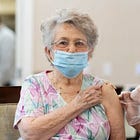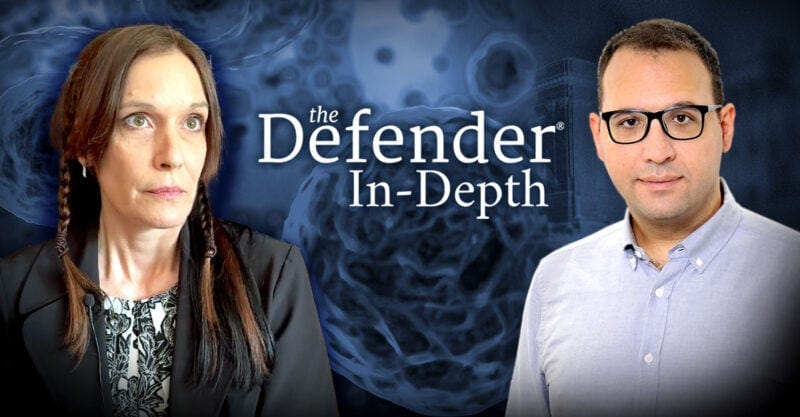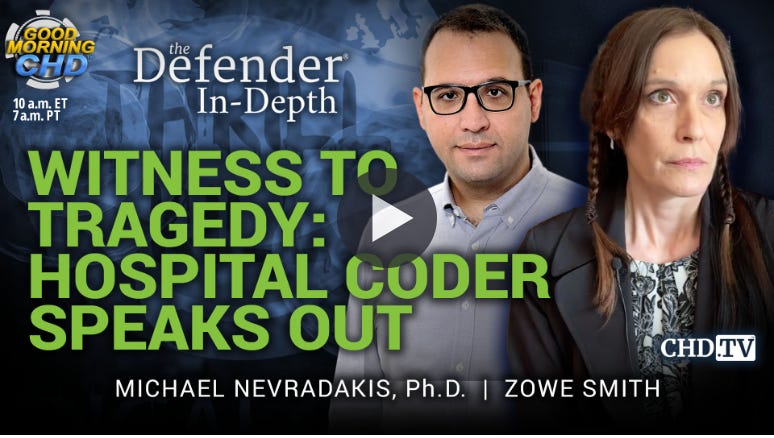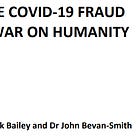Witness to Tragedy: 'HUGE' Financial Incentives Led Hospitals to Use COVID Treatments That Killed Patients
Zowe Smith had a fairly mundane job. As a medical coder at an Arizona hospital, her job was to take information from patient records and “translate that into diagnosis and procedure codes.”
One-time or recurring donations can be made through Ko-Fi:
By Michael Nevradakis, Ph.D. September 19, 2024
Zowe Smith, who left her job as a medical coder in an Arizona hospital, joined “The Defender In-Depth” to discuss how the use of ventilators and remdesivir unnecessarily caused the deaths of COVID-19 patients admitted to hospitals.
Zowe Smith had a fairly mundane job. As a medical coder at an Arizona hospital, her job was to take information from patient records and “translate that into diagnosis and procedure codes.”
But when the COVID-19 shots and COVID-19 hospital protocols were introduced, Smith began to see things she’d never before seen in her career.
“We all believe that this is where people are supposed to go to get better … the hospital is supposed to help you,” Smith told “The Defender In-Depth” this week. “That’s not what was happening.”
Smith resigned and started speaking out about the suffering she saw recorded on patient medical records. She is the author of “The COVID Code: My Life in the Thrill Kill Medical Cult.” She also writes regularly on Substack.
Patients were ‘circling the drain’ soon after administration of COVID protocols
Smith said that medical coding, aside from being used for insurance purposes, is used to track the number of cases of diseases and illnesses regionally and nationwide.
Her job was to expose “the patterns of disease going on” in the population — and she said what she observed during the pandemic led her to begin questioning.
“Even when I was experiencing what I saw, it was almost unbelievable that this could even happen in a hospital,” said Smith, who first noticed abnormalities when the hospital started implementing COVID-19 protocols.
“I started noticing … patients trying to escape the hospital, like unplugging things, pulling out vent tubes and escaping … then I started to hear rumors about the ventilators and I knew that there was a bonus for [giving] remdesivir,” Smith said.
Smith said patients coming in with cold and flu symptoms were treated differently than they had been before the COVID-19 outbreak. “Before COVID, a cold, flu or pneumonia case, you would normally be home within three days, maybe a week, unless you had other major conditions.”
Before the pandemic, patients were rarely placed on ventilators. Smith said:
“Before the pandemic and the hospital protocols began, we did not connect patients to ventilators right away. It wasn’t until they were in dire straits and we had tried every other method that they would be put on a ventilator, and then they would be coming off those ventilators as soon as possible.”
But under the COVID-19 hospital protocols, patients “would be on the ventilators for 30 days or more sometimes, which was incredibly rare,” Smith said. “On top of that, they weren’t talking about disconnecting these patients from the ventilator, which should be something they’re talking about within 24 hours, because the longer you’re on, the less likely you are to come off the ventilator.”
Under the COVID-19 protocols, doctors “went straight to the ventilator” even if patient oxygen levels had not reached “the threshold where we would normally ventilate a person.”
Patients who were given remdesivir developed kidney failure within a few days. “I could see the lab values … they were getting worse almost immediately after the administration of remdesivir,” she said.
Smith described the pattern she observed: “Patient comes in, patient gets COVID diagnosis, patient [is] given a dose of remdesivir,” Smith said. “Pretty soon, they’re on vents. Pretty soon they have kidney failure and then they’re circling the drain and nothing that we could do would save them.”
Visits by loved ones were limited or prohibited due to pandemic restrictions and the hospital protocols — and this took a “horrific” toll on patients, Smith said.
According to Smith, patient records showed instances of “the police getting called to the hospitals” to eject “people that were trying to visit … dying loved ones or loved ones that were … being harmed by the hospital protocols.”
Smith said these patterns were evident to her as a medical coder. “Every note that happens between a nurse and a patient is documented. There’s social information that’s documented. There’s information from ambulance documentation that gets added to the medical record.”
‘Huge incentive’ for ‘financially kneecapped’ hospitals to implement protocols
According to Smith, at the start of the pandemic, hospitals were placed under financial pressure — which later incentivized them to accept payments for implementing the COVID-19 hospital protocols.
“When the world was asked to lock down … hospitals were also issued mandates … that they needed to shut down their OR [operating rooms], which is their bread and butter. That’s where most of their money is made,” she said.
Hospitals also had to “increase their ICU [intensive care unit] bed capacity” and “reduce the number of patients in the ICU beds,” Smith said.
This “financially kneecapped hospitals for many months, from about March [2020] to May, when we were told we had to make room for this expected wave of COVID patients, which never came,” Smith said.
In the summer of 2020, after Congress passed the CARES Act (Coronavirus Aid, Relief, and Economic Security Act), the COVID-19 protocols “came down to us from the NIH” — the National Institutes of Health. The protocols prescribed the use of remdesivir and ventilators for suspected COVID-19 patients and financially incentivized struggling hospitals to use them.
Hospitals “got 20% for every single dose of remdesivir they gave to a patient … they got the bonus for it being a COVID patient to begin with. And then if the patient goes on a ventilator … they got the maximum payment,” she said.
Hospitals hid vaccine injuries by not inquiring about vaccination status
Smith said medical records also contained evidence of patient injuries following administration of the COVID-19 vaccines.
“I began seeing some incredibly crazy cases,” Smith said. “I began to notice more cases … of near-instant death, like within an hour of multi-organ failure. Massive inflammation, brain death, things that we had never, ever seen before. In my 11 years of medical coding, I had never seen a case like that.”
She added:
“Most of those patients that had sepsis and the massive, whole-body inflammation did not make it. There were a lot of cases of seizures that were uncontrollable … and then people started to arrive with brain inflammation, encephalitis … some of them suffering from stroke-like symptoms. All of a sudden, massive blood clots coming in. And these were in young people. These were not elderly people with comorbidities.”
Yet, according to Smith, hospitals would not inquire about patients’ vaccination status, making it impossible to diagnose these conditions as vaccine injuries. “They weren’t asking the right questions [and] weren’t writing it in the medical record.”
Smith said she felt the need to turn her experience “into something positive.”
“Maybe I can take this information and put it out there so that people can be warned and they can know what’s going on,” Smith said. “To me, it’s about saving lives and it’s about helping us figure out what happened.”
Watch ‘The Defender In-Depth’ here:
Source: childrenshealthdefense.org
Related articles:














I feel sick every time I think of this horror.
I pray every night for justice, but am not optimistic.
I lost in 2020 what little faith I may have had left in doctors, hospitals, and the medical --- i almost wrote "medical profession" but stopped myself --- and the medical *business.*
She has become a historian and an archeologist - sifting through clues and seeing patterns. I can hardly imagine the mountain of data she processed. Her experience was multiplied how many times? In every hospital with an ICU? Imagine the number of victims, and the number of compliant staff who themselves would sooner or later have seen the same connections.